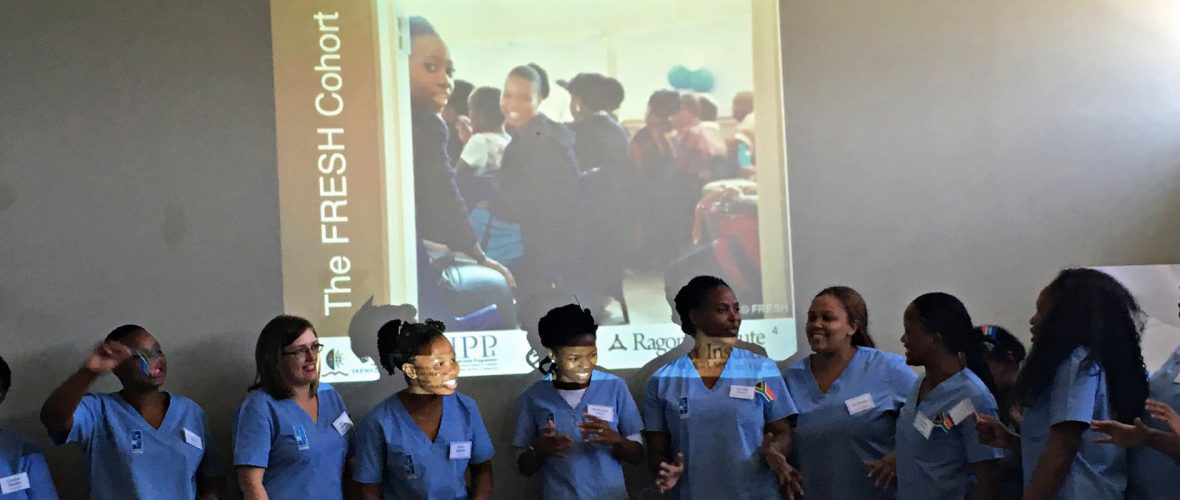
Ragon Institute study findings could pave the way to vaccine development
CAMBRIDGE, Mass. – Instituting combination antiretroviral (ART) treatment at the earliest stages of HIV infection may allow the generation of functional CD8 “killer” T cells and preservation of the CD4 helper T cells that are the virus’s primary target. Investigators from the Ragon Institute of Mass General, MIT, and Harvard describe the results of their study, conducted among South African women at risk for contracting the virus, in Science Translational Medicine.
“In a sense, this study shows that limiting the amount of virus the immune system encounters can stimulate much more potent CD8 T cell responses, leading to the development of long-term immune memory,” says Bruce Walker, MD, Ragon Institute director and senior author of the report. “The results have implications for HIV vaccine development, as this kind of functional immunity to HIV is what we would need from a vaccine.”
Typically, HIV infection induces a massive CD8 T cell response that initially suppresses viral levels. But that response soon becomes exhausted and remains dysfunctional, allowing the virus to rebound and establish a persistent infection. The Ragon Institute team – led by Zaza Ndhlovu, PhD, also of the Africa Health Research Institute and lead author of the report – set out to examine whether that process could be subverted by very early institution of ART. To do that, they enrolled a group of participants in the FRESH (Females Rising Through Education, Support and Health) study, based in KwaZulu-Natal, the South African province with one of the world’s highest HIV infection rates.
Instituted in 2012, the FRESH study enrolled women ages 18 to 23 who were not in school or employed, were sexually active and were HIV negative at the time of enrollment. Along with attending twice-weekly sessions addressing career development, self-esteem, relationships, gender-based violence and HIV prevention and treatment, participants receive HIV testing at each visit. The current study enrolled 46 participants in whom “hyperacute” HIV infection was detected – 26 who began receiving ART within 24 to 48 hours of initial detection, 8 who began receiving ART at later stages of infection and 12 who began treatment when CD4 T cells dropped below 350, the standard treatment guideline for South Africa at the time.
The results showed that, while the immediate HIV-specific CD8 T cell response of women receiving very early ART was much less intense than that of those whose treatment began later, that response remained functional – as indicated by continued expression of genes associated with key antiviral cytokines – and persistent. Early ART also altered the maturation of HIV-specific CD8 T cells towards generation of effective antiviral T cell memory and promoted robust HIV-specific CD4 T cell responses.
“Understanding what constitutes a ‘good’ immune response to HIV gives us important information for vaccine design and could guide the development of interventions to achieve these kinds of responses in chronic infection,” says Walker. “We now need to see whether these responses can control HIV in the absence of ongoing ART treatment or if we can further augment their immune responses, for example, by immunizing against highly networked viral amino acids as described in our recent Science paper.” Walker is the Phillip T. and Susan M. Ragon Professor of Medicine at Harvard Medical School and a Howard Hughes Medical Institute investigator.
Additional co-authors of the Science Translational Medicine paper are Samuel W. Kazer, Krista Dong, MD, and Alex K. Shalek, PhD, Ragon Institute; Thandeka Nkosi, Funsho Ogunshola, MHS, Daniel M. Muema, PhD, and Thumbi Ndung’u, BVM, PhD, Africa Health Research Institute; Gursev Anmole, Shayda Swann and Mark Brockman, PhD, Simon Fraser University, Burnaby, BC, Canada; Amber Moodley, Doris Duke Medical Research Institute, University of KwaZulu-Natal; and Tarylee Reddy, PhD, South Africa Medical Research Council.
Support for the study includes Bill and Melinda Gates Foundation grants OPP1066973 and OPP1146433, National Institutes of Health grants R01 AI145305 and R37 AI067073; grants from the Collaboration for AIDS Vaccine Discovery, the Howard Hughes Medical Institute, the Witten Family Foundation, Dan and Marjorie Sullivan; the Mark and Lisa Schwartz Foundation, Ursula Brunner, Gilead Sciences, the Harvard University Center for AIDS Research and the International AIDS Vaccine Initiative.
The Ragon Institute of Mass General, MIT, and Harvard was established in 2009 with a gift from the Phillip T. and Susan M. Ragon Foundation, creating a collaborative scientific mission among these institutions to harness the immune system to combat and cure human diseases. A primary focus of the institute has been to contribute to the development of an effective AIDS vaccine. The Ragon Institute draws scientists and engineers from diverse backgrounds and areas of expertise across the Harvard and MIT communities and throughout the world to apply the full arsenal of scientific knowledge to understanding mechanisms of immune control and immune failure and to benefit patients.
This article appears on the Ragon Institute website with the permission of the author.
Mass. General media contact: Noah Brown, nbrown9@partners.org, 617-643-3907